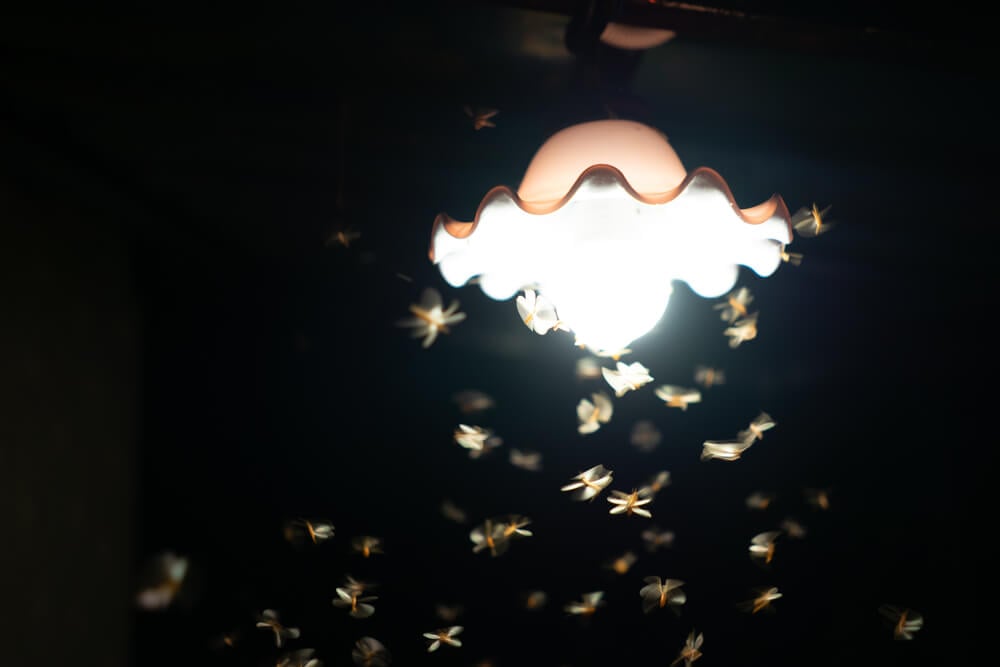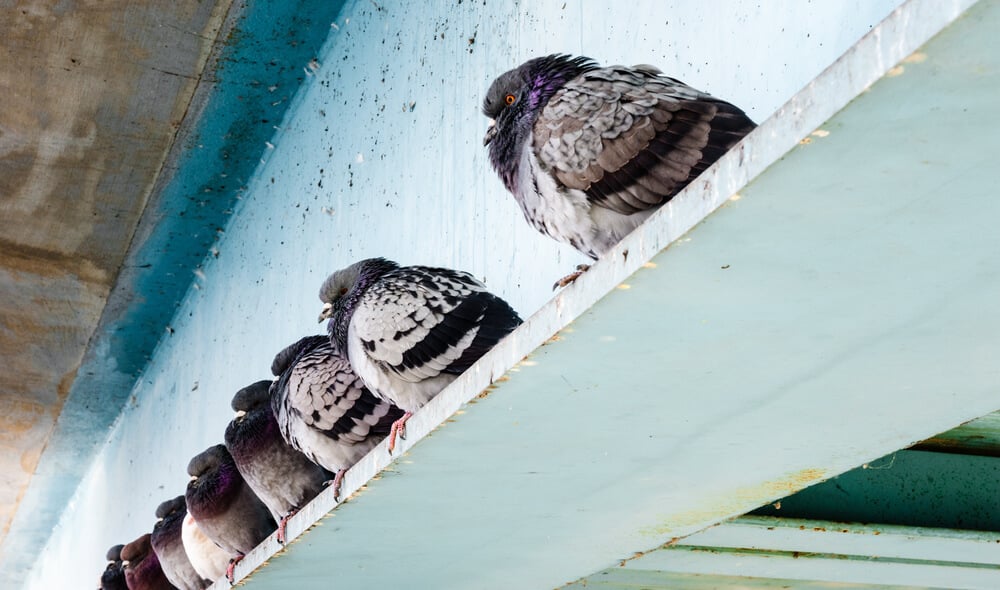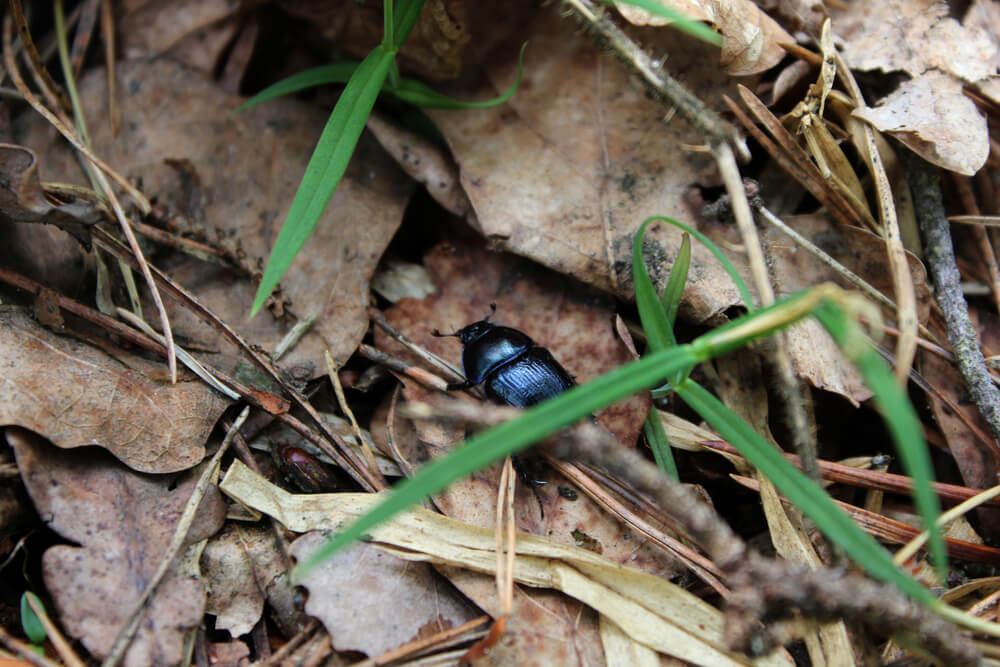Phototaxis is the scientific term for any kind of directional movement that responds to a light source. Scientists consider moths and other common winged insects positively phototactic because they fly toward light sources. Other insects, like cockroaches, are negatively phototactic, which means they’re repulsed by light and scurry away from it.
Here’s where things get wild: no one knows for sure why some insects are phototactic. Different communities of experts subscribe to different theories, but no one knows that their theory is right for sure. While we can’t claim to know which theory is correct, we can certainly explain each of the prevailing theories for phototaxis, and report on their strengths and shortcomings. Here are some of the most compelling contemporary theories as to why bugs seem to want to fry themselves on your porch light so badly.
Transverse Orientation

Probably the most popular theory for positive phototaxis is that our artificially bright lights confuse insects’ instinctual navigational systems.
Professor of entomology at Penn State Mike Saunders explains that many moth species use the moon as a means of orienting themselves during night flying--a function known as
transverse orientation. The moon acts as a constant reference point because moonlight always reflects off a moth’s eye at the same angle. Moths allegedly use this reference point to know they’re flying in the right direction.
This mode of navigation counts on the moon being the greatest source of light available at night, however. When light bulbs appear brighter than the moon, moths end up orienting their flight according to artificial light instead. Counting on the bulb to be their navigator, they fly right towards it. Insects continue to orient themselves by the light bulb even after they arrive, which is why they flutter around it repeatedly until they overheat or tire themselves out.
Problems With This Theory
Light bulbs didn’t exist while moths evolved, but manmade fires have existed for some 400,000 years. Given that moths usually die when they’re attracted to light, it seems like they should've evolved out of the habit.
Other critics aren’t even convinced that moths use transverse navigation in the first place! University of California–Berkeley entomologist and moth specialist Jerry Powell explains that 50 to 70 percent of moth species don’t migrate or generally fly long distances, which is when transverse navigation would emerge as a favorable form of flight guidance. It doesn’t make evolutionary sense for most moths to use transverse navigation, and so it might not account for their apparent attraction to light.
Light Wave Lengths
 A couple different theories of moth phototaxis involve different types of light wavelengths. In the 1970s, US Department of Agriculture entomologists theorized that light wavelengths in the infrared spectrum, such as those in the light given off by flames, match some of the exact wavelengths of light given off by female moths’ luminescent pheromones. Male moths fly towards candles and other flames because they think there’s a... hot... female moth beckoning them over.
One of the main problems with this theory is that moths seem even more attracted to ultraviolet (UV) light wavelengths than infrared ones. UV light’s wavelengths are significantly shorter than those given off by infrared. However, another theory accounts for UV attraction: UV wavelengths “look” like food to moths. Many moth species subsist on the nectar of flowers. Flowers naturally reflect UV wavelengths, so moths adapted to fly toward those wavelengths to seek out food. Many common artificial light sources use UV rays. When moths see the UV rays produced by these lights, they think they’re seeing the reflection of a food source, and they head toward it.
A couple different theories of moth phototaxis involve different types of light wavelengths. In the 1970s, US Department of Agriculture entomologists theorized that light wavelengths in the infrared spectrum, such as those in the light given off by flames, match some of the exact wavelengths of light given off by female moths’ luminescent pheromones. Male moths fly towards candles and other flames because they think there’s a... hot... female moth beckoning them over.
One of the main problems with this theory is that moths seem even more attracted to ultraviolet (UV) light wavelengths than infrared ones. UV light’s wavelengths are significantly shorter than those given off by infrared. However, another theory accounts for UV attraction: UV wavelengths “look” like food to moths. Many moth species subsist on the nectar of flowers. Flowers naturally reflect UV wavelengths, so moths adapted to fly toward those wavelengths to seek out food. Many common artificial light sources use UV rays. When moths see the UV rays produced by these lights, they think they’re seeing the reflection of a food source, and they head toward it.
Problems With This Theory
As you’ve probably already guessed, these theories have many of the same problems as the transverse orientation theory did. If following wavelengths results in the death of moths so frequently, why would the behavior persist for this long?
As Saunders points out, moths also have other means of finding food at night. Many moths are capable of detecting the high CO2 levels emitted by flowers in bloom and producing nectar. This is a more efficient and safe means of finding food than following UV rays, so it makes more sense that moths would use CO2, not UV, to find food. Finally, it seems odd that many different species would exhibit the same behavior toward light. Some moth species don’t eat nectar as a primary food source. They shouldn’t be attracted to UV light. Likewise, some moths don’t produce infrared pheromones. Why would male moths of those species fly toward infrared light?
Though these are the most well-known theories, there are plenty of other ones too. Some scientists believe moths fly towards light to hide in a dark ring they perceive around the light. Others believe they do it because they can see that the path to the light is clear. Moths could even simply use the light to aid them in finding a hiding place.
The truth is, nobody knows quite why moths seem so keen to fry themselves. At least moth’s predilection for light makes them easier to trap--until they evolve out of it, that is. If you have a moth problem, no matter what kind of moth or how severe the issue, give Plunkett’s a call today. We know a thing or two about moths–and every other kind of insect for that matter–and we’re sure we can help.
 Probably the most popular theory for positive phototaxis is that our artificially bright lights confuse insects’ instinctual navigational systems. Professor of entomology at Penn State Mike Saunders explains that many moth species use the moon as a means of orienting themselves during night flying--a function known as transverse orientation. The moon acts as a constant reference point because moonlight always reflects off a moth’s eye at the same angle. Moths allegedly use this reference point to know they’re flying in the right direction.
This mode of navigation counts on the moon being the greatest source of light available at night, however. When light bulbs appear brighter than the moon, moths end up orienting their flight according to artificial light instead. Counting on the bulb to be their navigator, they fly right towards it. Insects continue to orient themselves by the light bulb even after they arrive, which is why they flutter around it repeatedly until they overheat or tire themselves out.
Probably the most popular theory for positive phototaxis is that our artificially bright lights confuse insects’ instinctual navigational systems. Professor of entomology at Penn State Mike Saunders explains that many moth species use the moon as a means of orienting themselves during night flying--a function known as transverse orientation. The moon acts as a constant reference point because moonlight always reflects off a moth’s eye at the same angle. Moths allegedly use this reference point to know they’re flying in the right direction.
This mode of navigation counts on the moon being the greatest source of light available at night, however. When light bulbs appear brighter than the moon, moths end up orienting their flight according to artificial light instead. Counting on the bulb to be their navigator, they fly right towards it. Insects continue to orient themselves by the light bulb even after they arrive, which is why they flutter around it repeatedly until they overheat or tire themselves out.
 A couple different theories of moth phototaxis involve different types of light wavelengths. In the 1970s, US Department of Agriculture entomologists theorized that light wavelengths in the infrared spectrum, such as those in the light given off by flames, match some of the exact wavelengths of light given off by female moths’ luminescent pheromones. Male moths fly towards candles and other flames because they think there’s a... hot... female moth beckoning them over.
One of the main problems with this theory is that moths seem even more attracted to ultraviolet (UV) light wavelengths than infrared ones. UV light’s wavelengths are significantly shorter than those given off by infrared. However, another theory accounts for UV attraction: UV wavelengths “look” like food to moths. Many moth species subsist on the nectar of flowers. Flowers naturally reflect UV wavelengths, so moths adapted to fly toward those wavelengths to seek out food. Many common artificial light sources use UV rays. When moths see the UV rays produced by these lights, they think they’re seeing the reflection of a food source, and they head toward it.
A couple different theories of moth phototaxis involve different types of light wavelengths. In the 1970s, US Department of Agriculture entomologists theorized that light wavelengths in the infrared spectrum, such as those in the light given off by flames, match some of the exact wavelengths of light given off by female moths’ luminescent pheromones. Male moths fly towards candles and other flames because they think there’s a... hot... female moth beckoning them over.
One of the main problems with this theory is that moths seem even more attracted to ultraviolet (UV) light wavelengths than infrared ones. UV light’s wavelengths are significantly shorter than those given off by infrared. However, another theory accounts for UV attraction: UV wavelengths “look” like food to moths. Many moth species subsist on the nectar of flowers. Flowers naturally reflect UV wavelengths, so moths adapted to fly toward those wavelengths to seek out food. Many common artificial light sources use UV rays. When moths see the UV rays produced by these lights, they think they’re seeing the reflection of a food source, and they head toward it.









